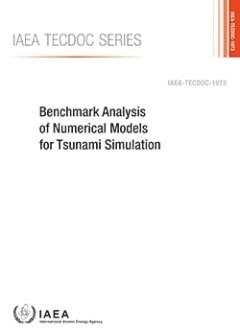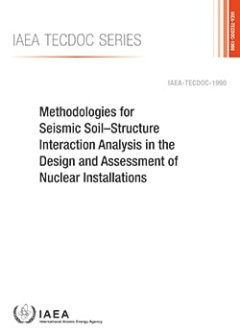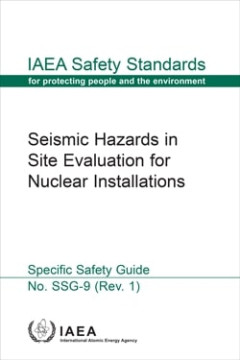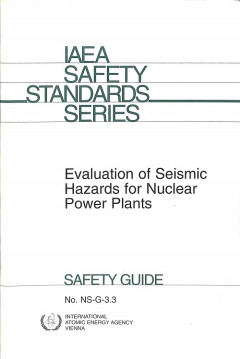Ditapis dengan

Benchmark Analysis of Numerical Models for Tsunami Simulation: IAEA TECDOC No…
The 2004 Indian Ocean tsunami damaged the Madras Atomic Power Station in India and led to a new understanding of the importance of flooding hazards caused by tsunamis at nuclear power plant sites. The Great East Japan Earthquake and subsequent tsunami in 2011, which heavily damaged the Fukushima Daiichi nuclear power plant, re-emphasized the importance of tsunami hazard assessments. Recognizing…
- Edisi
- -
- ISBN/ISSN
- 978-92-0-128321-4
- Deskripsi Fisik
- 146 p
- Judul Seri
- IAEA TECDOC series
- No. Panggil
- 551.4637 IAE b

Methodologies for Seismic Soil–Structure Interaction Analysis in the Design…
The response of a nuclear installation’s structure during an earthquake depends on the characteristics of the ground motion, the surrounding soil and the structure itself. Soil– structure interaction (SSI) analysis is used to evaluate the effects of seismic ground motion on an installation’s structure, system and components, to ensure it is designed to withstand the effects of earthquakes…
- Edisi
- -
- ISBN/ISSN
- 978-92-0-143121-9
- Deskripsi Fisik
- 194 p
- Judul Seri
- IAEA TECDOC
- No. Panggil
- 621.039.58 IAE m

Seismic Hazards in Site Evaluation for Nuclear Installations: IAEA Safety Sta…
The IAEA’s Statute authorizes it to “establish…standards of safety for protection of health and minimization of danger to life and property”. These are standards that the IAEA must apply to its own operations, and that States can apply through their national regulations. Radioactivity is a natural phenomenon and natural sources of radiation are features of the environment. Radiation…
- Edisi
- -
- ISBN/ISSN
- 978-92-0-117921-0
- Deskripsi Fisik
- 77 p
- Judul Seri
- IAEA safety standards series
- No. Panggil
- 621.039.58

Evaluation of Seismic Hazards for Nuclear Power Plants, Safety Guide
This book consist : Introduction; General recommendations; Necessary information and investigations; Construction of a regional seismotectonic model; Evaluation of ground motion hazard; Potential for surface faulting at the site; and Quality assurance. (Jml)
- Edisi
- -
- ISBN/ISSN
- 9201173024 / 1020525X
- Deskripsi Fisik
- 31 p. : Illus. ; 24 cm
- Judul Seri
- Safety Standards Series No. NS-G-3.3
- No. Panggil
- -
 Karya Umum
Karya Umum  Filsafat
Filsafat  Agama
Agama  Ilmu-ilmu Sosial
Ilmu-ilmu Sosial  Bahasa
Bahasa  Ilmu-ilmu Murni
Ilmu-ilmu Murni  Ilmu-ilmu Terapan
Ilmu-ilmu Terapan  Kesenian, Hiburan, dan Olahraga
Kesenian, Hiburan, dan Olahraga  Kesusastraan
Kesusastraan  Geografi dan Sejarah
Geografi dan Sejarah